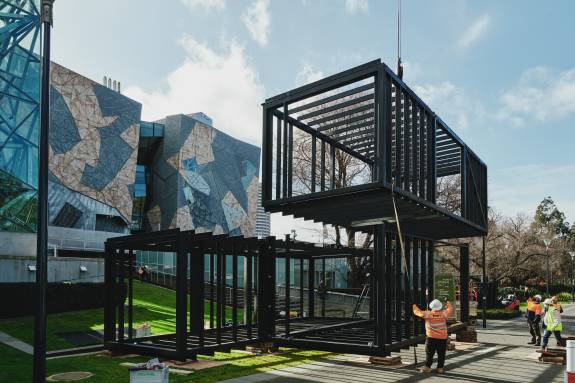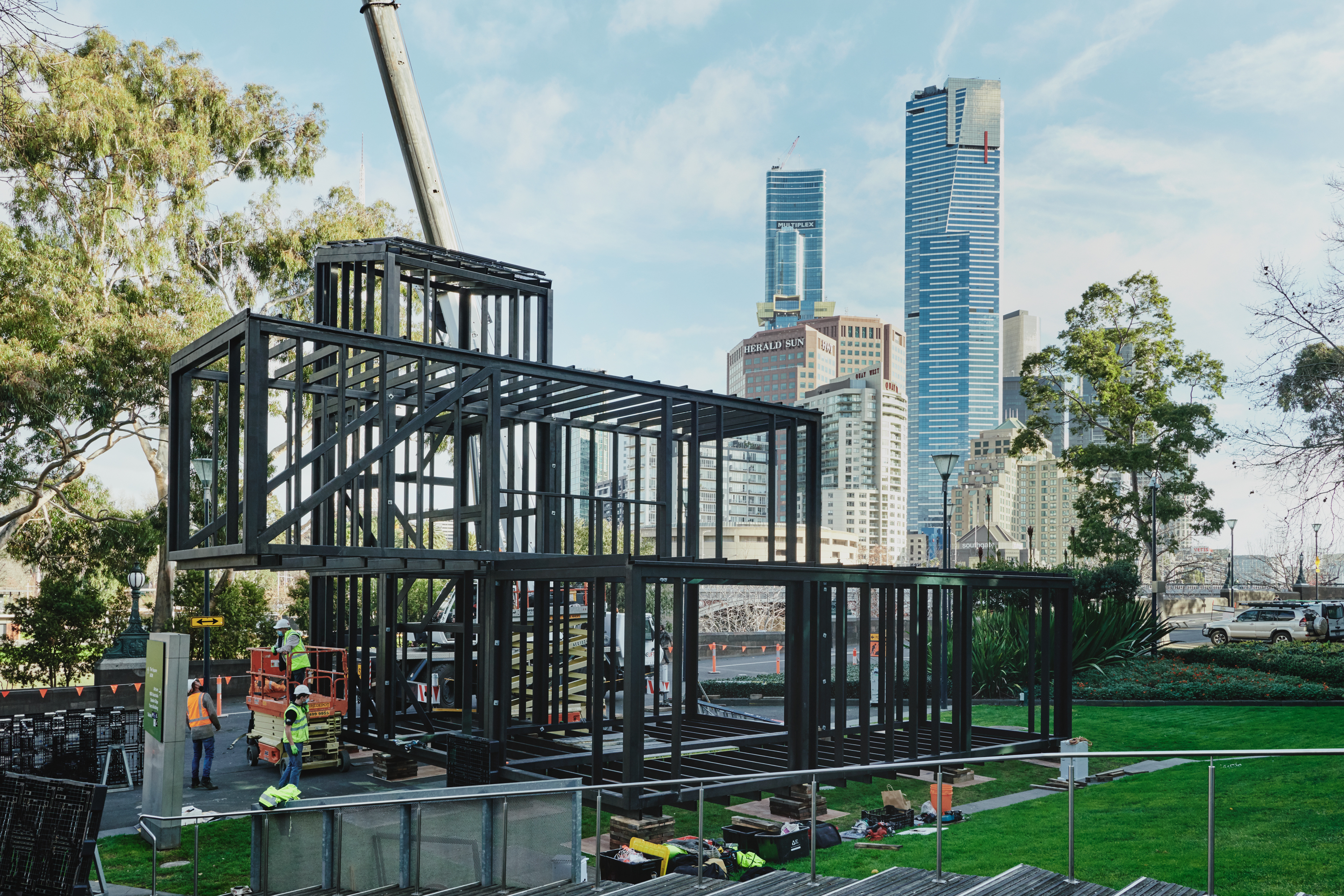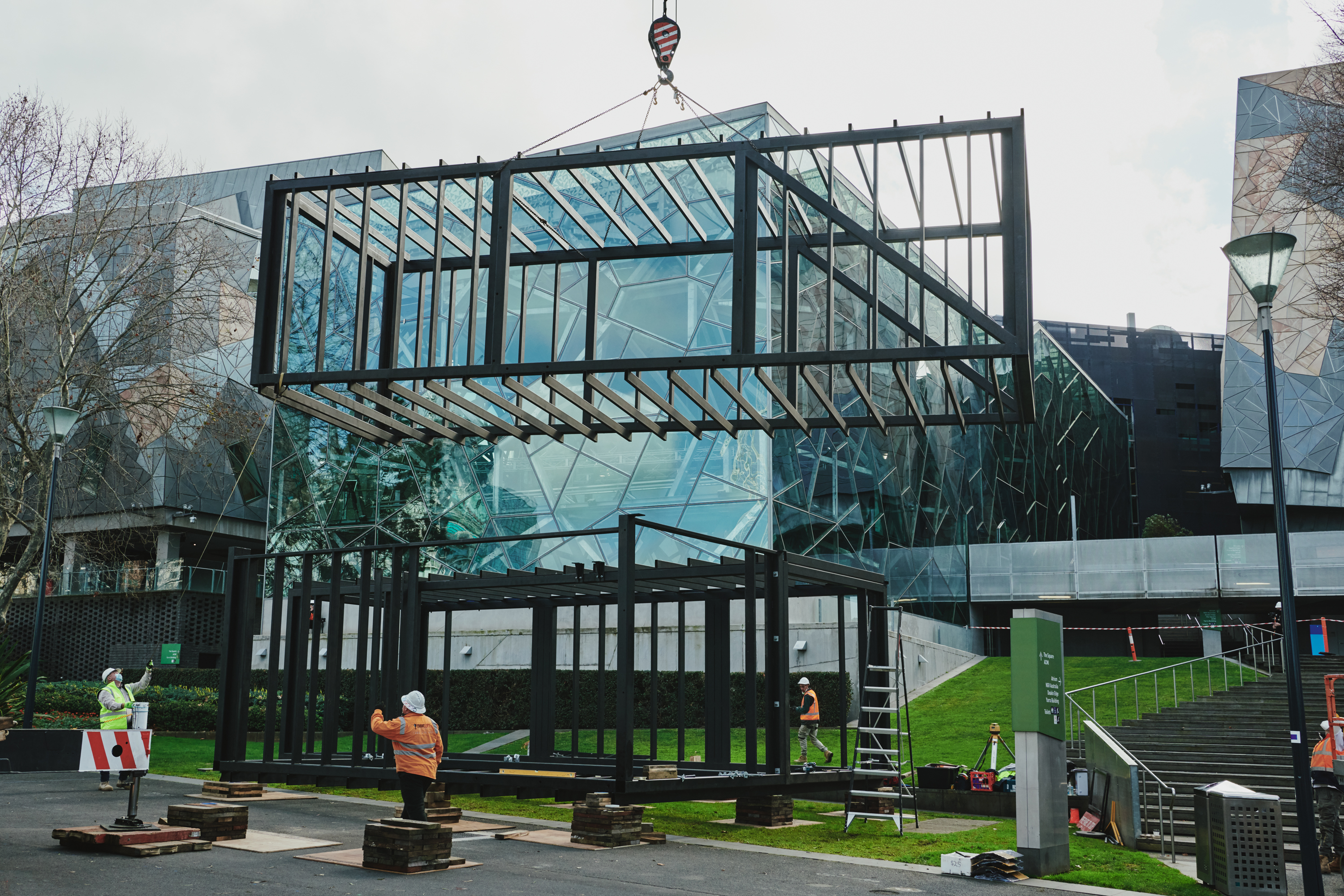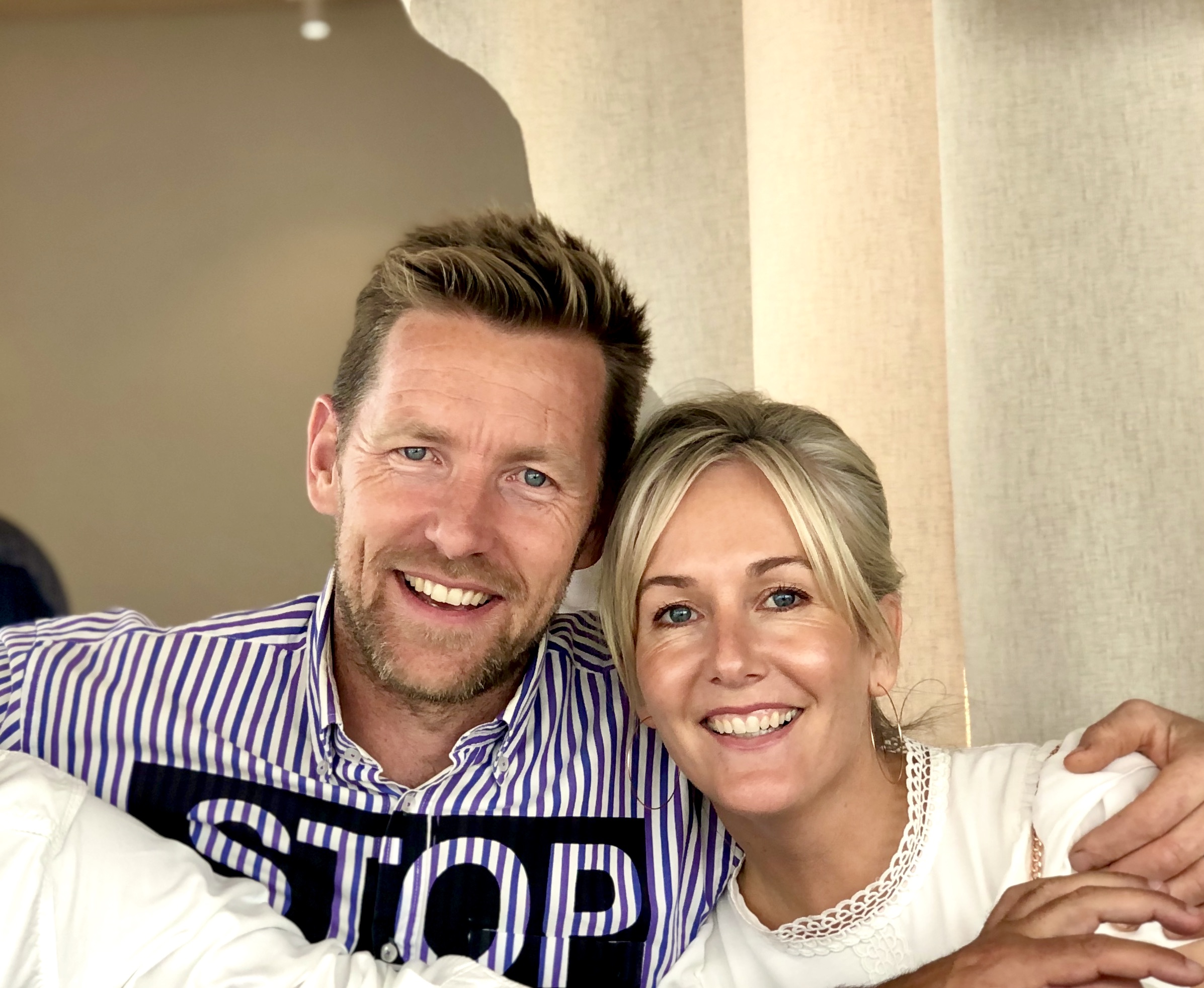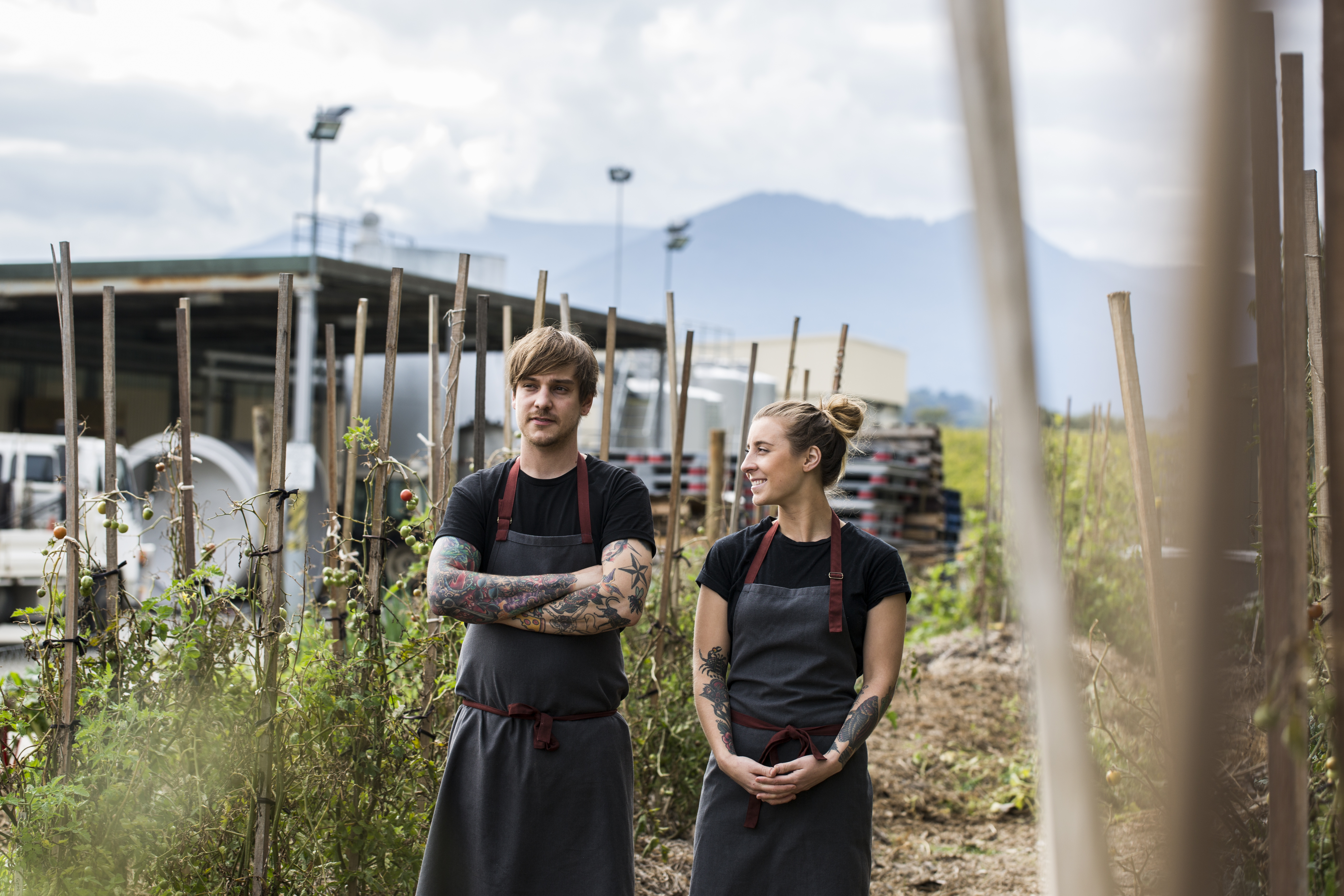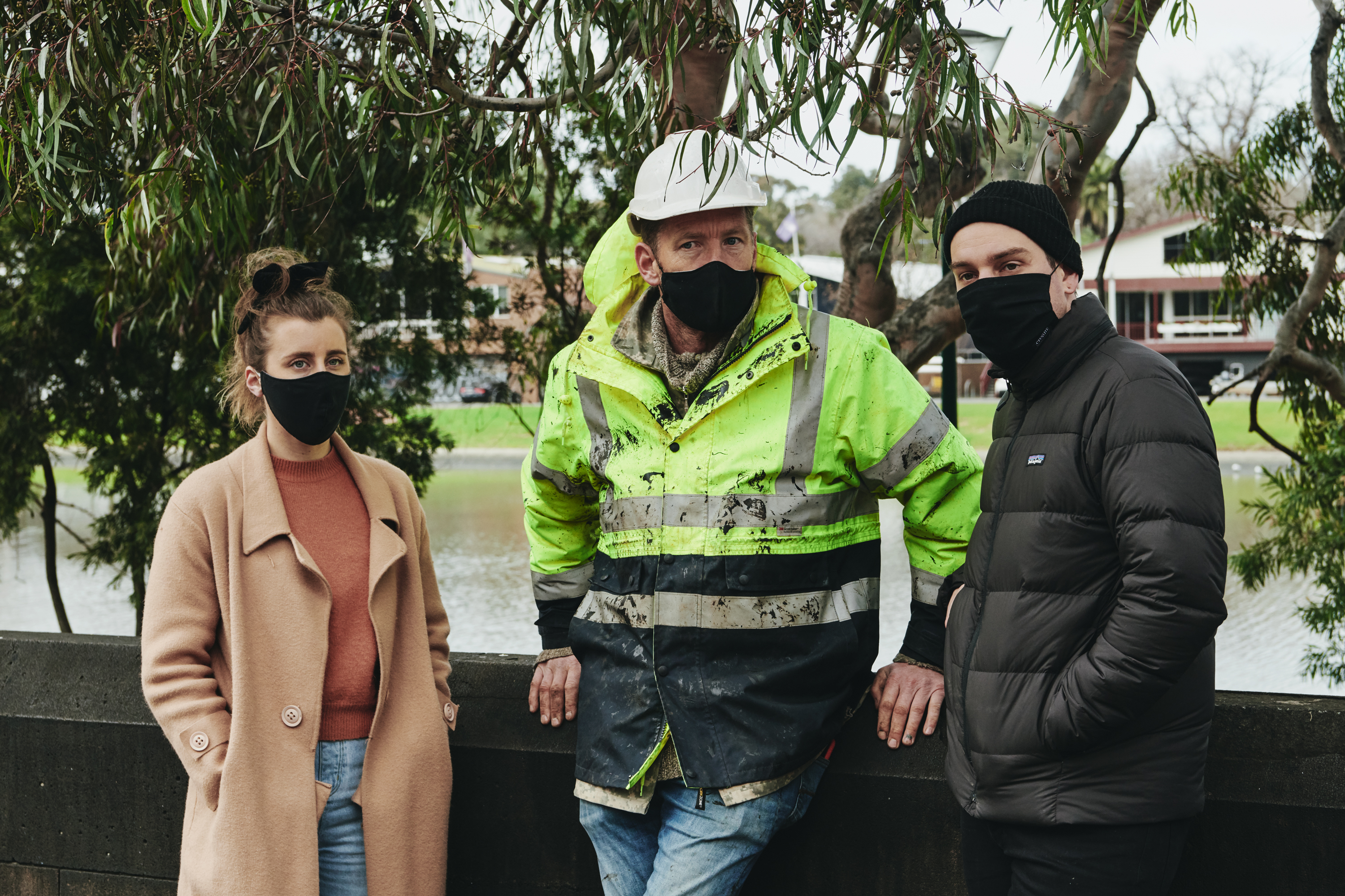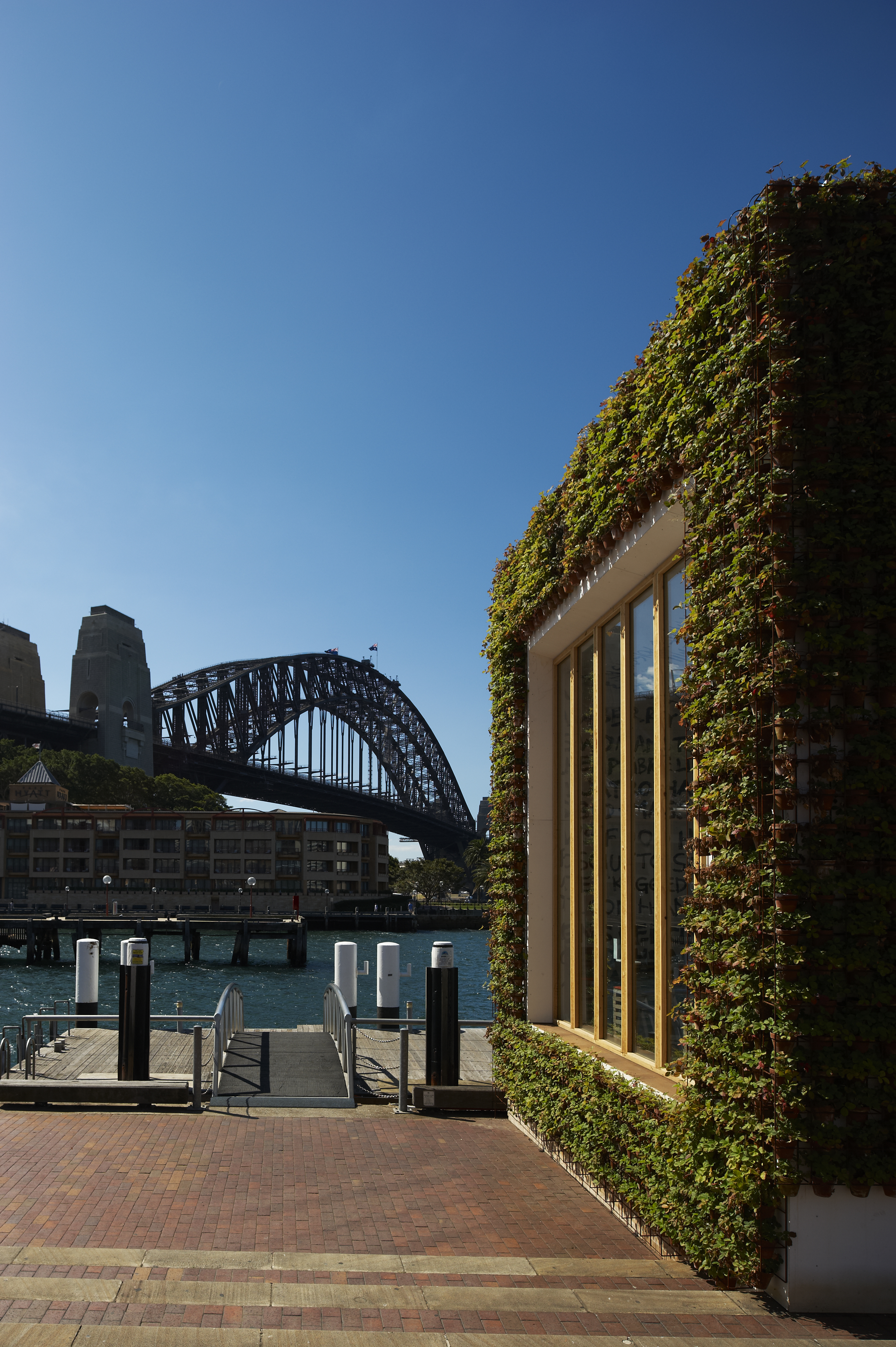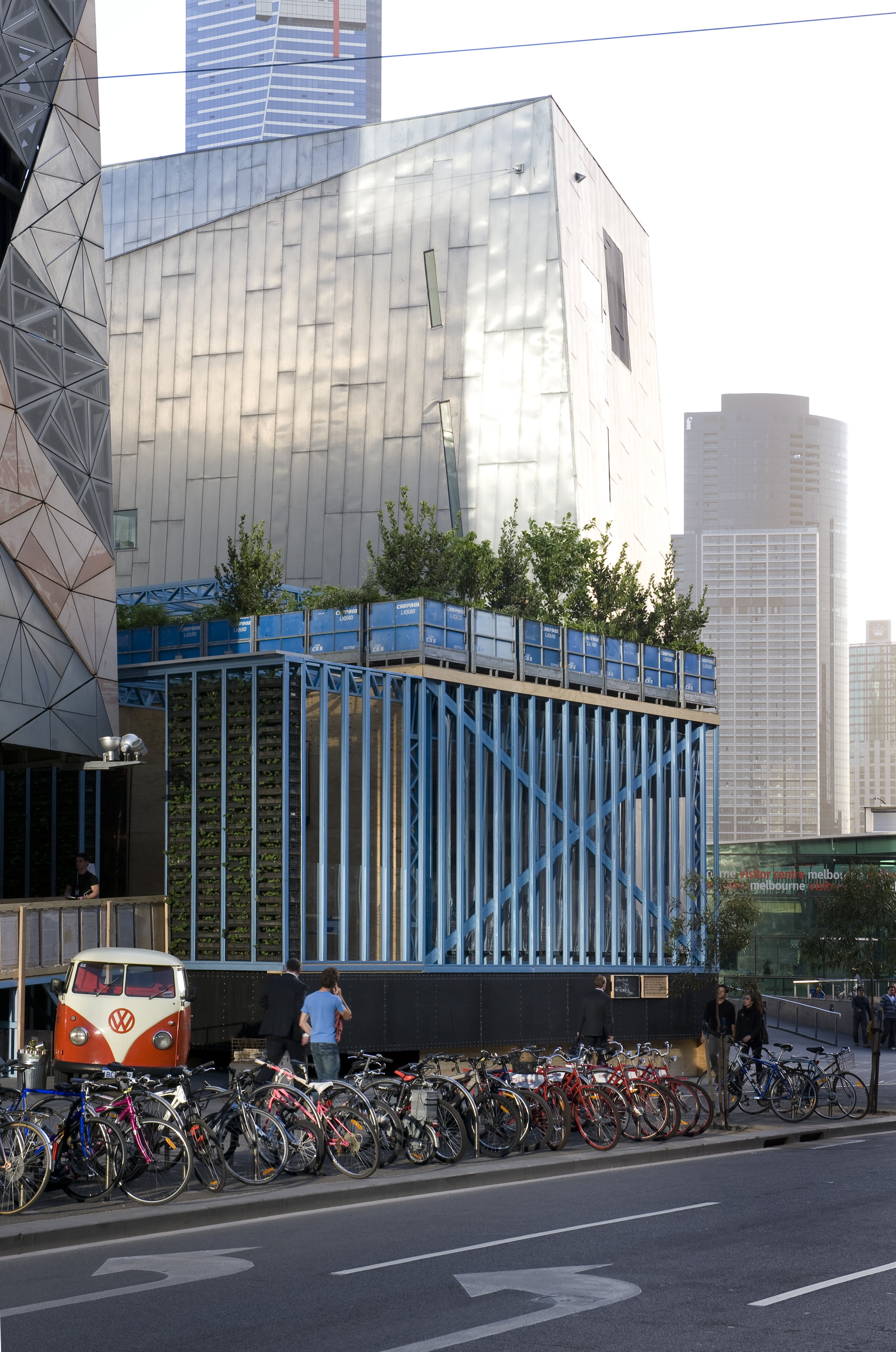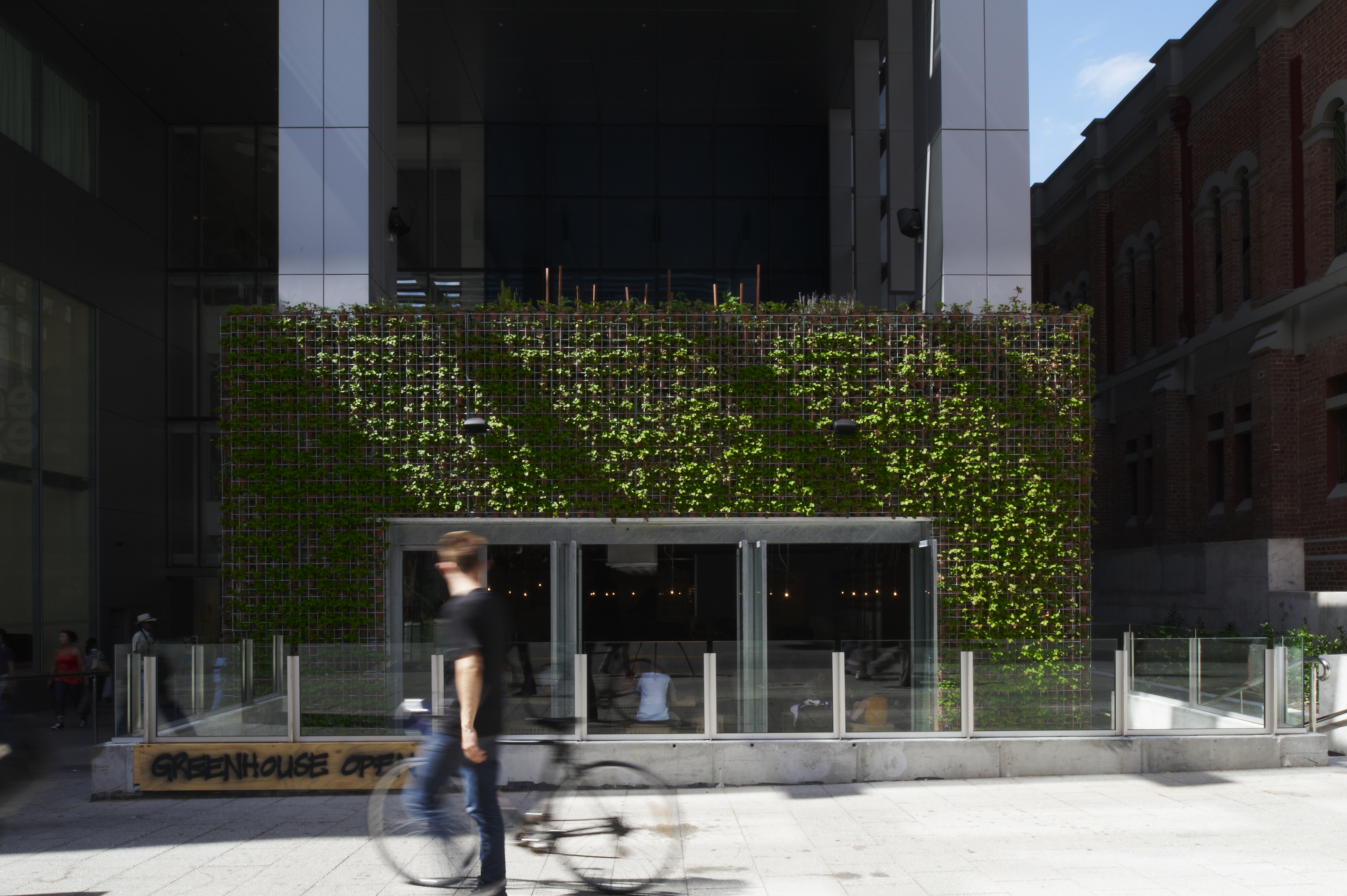
Joost Bakker. Photo: Adam Gibson
futurefoodsystem
Joost Bakker
Joost Bakker is an interdisciplinary visionary, born in the Netherlands, and raised in Australia. 'The way we grow, harvest, transport, sell, and eat our food are the most destructive human activities on the planet. Imagine solving the world’s biggest problems by changing the way we live. We have the ability to create a positive impact by growing our own food. Every one of us generates an abundant nutrient source, we just need to harness it.' Joost Future Food System
Accessible & affordable
The concept has been designed to ensure all building processes and living systems are inclusive and openly available to the public: - Open-source design - Target building materials and manufacture: $350K AUS - Community education via social media: build details, sustainable living information, recipes. Find all information about tours, livestreams, dining experiences or take a virtual tour on the website.
Residents Jo Barrett and Matt Stone
Award-winning chefs Jo Barrett and Matt Stone will embark on an 8-month residence; growing, harvesting, and cooking food sourced from the building. Future Food System will host special guests, influencers, educators who will be encouraged to share their experiences and learnings via social media. Everything in the project will be recorded, measured, and made public, from the air quality in the house (partly due to the presence of natural elements in the building) to monitoring the intestinal flora of the residents. The food grown in the project will be compared with similar food from the supermarket to investigate the differences in nutrients. Future Food System.
Joost Bakker:
Federation Square is a fantastic place to realize this project, in the heart of the city. July 28th we’ll start the construction on-site, everyone can follow us live and see what we do. It will all be published on our social media channels. At the end of September, we hope to finish the building. From that moment Matt Stone and Jo Barrett will live in the project. They’ll demonstrate for 8 months that it’s possible to live completely off-grid and self-sufficient in the middle of the city. The project will be built only from recyclable materials. A steel frame, painted with rubber skin. The walls, floor, and ceiling will be built from compressed straw, outside lined with a natural, bushfire resistant skin that I tested in 2012.
Solar panels and roof gardens on the roofs and a stairwell atrium and mush(room) inside. The toilet is situated above the digester. Together with the organic waste from the digester, we will use urine and stools to create gas. Miele has supported using this system to generate gas for ovens and cooktops. I have a long history of collaborating with Miele and this again shows their mutual respect and desire for a sustainable future. My goal is a zero-waste system. I dream that we no longer create waste and bring essential nutrients back into our food. There is no such thing as waste in nature. We, humans, are the only creatures that produce waste.
The only reason we produce waste is that we have built a system in which it’s simply accepted. If we no longer allow it, we will quickly develop alternatives. I have no doubt that in the future we live in a new system without waste.
We designed waste into our lives, now we need to design it out!

My obsession with zero-waste goes much deeper, I believe the survival of humans as a species, depends on the development of a zero-waste economy, a closed loop. Our food no longer feeds us, because our soils are exhausted. By returning the 'waste' directly to the soil, you bring back the nutrients to the food we grow. There are so many layers of life in soil from bacteria, mycelium, worms, and other living organisms that are fundamental to growing healthy food.
We have an incredible opportunity; we can make a radical change in the system now. That's why I'm so passionate about zero-waste. As Douglas McMaster said, "Waste is a failure of the imagination.”
Closed-loop
In 1860, a doctor in America wrote about the prosperity of people when they live on nutritious soil. It affects both physical and mental health. If the soil is depleted, two generations will still do quite well. Problems arise in the third generation. That's what happens now. Since 1918, synthetic fertilizer became an alternative input. 100 Years later, there are so many diseases, depression, cancer, anxiety disorders, etc. in the world. The cause lies mostly in our diet. The only way to solve this is to go back to the old system, a closed-loop.
Haber and Bosch
In 1918 scientists and doctors started became concerned, how to feed a population of 2 billion people. In the same year, Haber and Bosch were awarded the Nobel Prize for making fertilizer from gas. It was a revolutionary change, and soon global agriculture yielded unimaginable yields, year after year, without the need to alternate between crops (crop rotate) or livestock. This revolution is now known as the ‘green revolution’. Soon more food was produced than we could possibly consume. This was the reason why, for example, we started to use grain as food for animals.
Synthetic NPK fertilizer
Synthetic NPK fertilizer provides plants with 3 elements making them grow almost in front of your eyes, Nitrogen, Phosphorus, and Potassium. What we now realize is that the other 100+ elements we (and animals) need for our health are missing in this system. All these elements have been mined from our soils. Year after year and today most soils are depleted.
What this system produces is empty, fake food. Today we have great shortages of micronutrients, such as manganese, zinc, magnesium, iron, it’s a long list. Our modern food system feeds us with compromised food and for me, it’s clear what effect it has on our society. Depression, anxiety, and degenerative diseases are rising at an alarming rate. Not only for adults but also for children as well as a constant clearing of the old-growth forest as farmers seek ‘fresh’ nutrient-rich soils. In my opinion, it works the same with soil as with a bank. We keep on absorbing and using it, but we don't put anything back, which eventually causes the nutrients in our soil to disappear. Our bank accounts are empty, we haven’t made any deposits.
Future Food System
At the moment we are working hard to come up with recipes and planting seeds for the Future Food System. Jo Barett is famous for her desserts and cheese; she often uses milk in her recipes. But milk is difficult to produce in this project, you can't let a cow graze on the roof. That's why I spend many hours searching for possible alternatives.

Tiger Nuts of Chufa
I found it in the so-called 'Tiger Nuts' or Chufa, a crop that has been used for over 1.5 million years. In ancient times, 80% of the diet of Nutcracker Man was made up of Tiger Nuts. It only takes 6 square meters to grow enough Tiger Nuts for a glass of milk per person each day. A truly sustainable alternative to regular milk and loaded with fibre. Tiger Nuts are considered weeds, even the weed killer Round-Up doesn’t eradicate it.
That’s so good, you make valuable food out of something that seems to be worthless. Matt and Jo are excited about it, yesterday they roasted the Tiger Nuts and topped them with honey. I told them that in Egypt, in the Pyramids, they found roasted Tiger Nuts covered in honey, in the tombs of the pharaohs. It is incredibly valuable to cook with the food that has been eaten for over a million years. There are many more things that we used to eat, but we don’t eat anymore. Often the best solutions arise out of problems. We need a revolution, a rewilding system, without waste.
Vitamin K2 in milk
As soon as we think we can arrange things better than nature, things go wrong. For example, it’s necessary for cows to eat grass, only then you will find vitamin K2 in their milk. If you drink milk from a cow that didn’t eat grass, you won’t get vitamin K2 and the calcium from the milk calcifies in your arteries. This causes problems such as cerebral hemorrhages and heart problems. Often these issues don’t show until many generations later. The supermarkets are full of products for which milk has been used, from which all valuable elements are pasteurized. A farmer who had 6 cows 100 years ago, now has 400 cows in his barn. As a result, huge amounts of soy are imported to feed these cows.
The tiny European country Denmark imported a staggering 17 million tons in 2019 just to feed cows. In order to grow that soy, rainforests are being destroyed, chemicals are used, then it is transported to the other side of the globe. A broken system that’s even subsidized by European citizens. A system that to me makes no sense at all, how could we have allowed this to happen? The food you find in supermarkets doesn’t feed us in reality. Placing huge numbers of cows, pigs, or chickens, in industrial-sized sheds together in a relatively small space, is madness. Chickens that are 5 weeks old and weigh one kilo, no doubt it's the cheapest way but this economic saving costs us dearly in many other ways. Planetary and human health is the real cost that’s not being calculated.
We can't go on like this. Our food is grown on the other side of the world and transported to where we live. In the factories, it’s packed in trays, sterilized until all life is gone, so it can become a tradable, transportable commodity. The result is dead food. We, humans, have evolved eating living food, we must change our ways! In recent times there has been a resurgence of people growing food. Many people, both young and old, realize that it’s so much better to grow our own food, especially because of its quality. The interest in prolonging shelf life through fermentation is increasing enormously. This is huge progress worldwide. It's time that we come home and live amongst our food, see how it’s growing, how our animals are doing, that feels great. You become part of nature and breathe it, you live in your own food system, that is the future. For the last hundred years, we've trialed moving away from our food system, it’s clear this has been a mistake.
Weston Price
Weston Price, who was director of the America Dental Health Association in America from 1918 to 1928 traveled the world doing research. His valuable work demonstrated the link between nutrients in food and the poor state of tooth decay. At that time Americans were suffering from poor jaw development and rampant tooth decay, with 1 in 3 teeth affected. Among the Aboriginals in Australia, he found a tribe where no tooth decay occurred; among Eskimos in Alaska 1 in 300 people had tooth decay. He showed how important nutrient-dense foods are to our wellbeing.
Reuse waste
In the Future Food System, I intercept and use waste three times. First, it’s used to produce gas. What remains goes to the worm farm, where it’s converted into vermicast; microbe-rich superfood for plants. Then we use it again to feed the roof garden. We bring back all the bacteria and life to our food by returning the ‘waste’ to the soil. I believe that’s how it's meant to be, you can reuse over and over again. It has to be a closed-loop, just like in nature.
Zero-waste restaurants by Joost
Between 2008 and 2012, we opened five restaurants. We tapped wine from barrels sources directly from winegrowers in the Yarra Valley. We made our own butter, stone grinding our own grain. I didn't understand that people didn’t see what I saw, but it needed time. Now we're 12 years on, people still have to get used to these ideas, but they are ready now.
Teach the children
In recent years, many of my projects couldn’t be realized. That’s why I’ve been able to spend time with my children over the past five years. I enjoy myself with them and learn from them. From the beginning I have been cooking in their classrooms. The school created a kitchen out of the library. All classes grow vegetables in their own garden, we pick the vegetables and cook together. It’s wonderful to see how children enjoy growing, picking and cooking food.
The mentality we need
The head designer of Mercedes told me they don’t worry that much about competition from other car-companies, they worry more about the youth that don’t feel any need to buy a car at all. They use car share apps when they need a car, travel by public transport or rent a scooter. I love the way young people look at things. They don't feel any need to own possession anymore and no longer work from 9 to 5, but rather think it’s strange that people spend a large part of their lives, stuck in a job that always remains the same. They switch their perspective easily, are flexible and not stuck to ideas. That's the mentality we need.
Where did it start?
I don't know. I lived in the Netherlands until I was 9 years old, in that time I learned a lot from my mother. She painted, created art, using wood, and other materials. She also made flower arrangements. We visited artists in their studio. When I was about 5 years old my teacher Els told mum that she thought it would be a good idea for me to work more with art. Maybe Joost could be mentored by a local artist? Mum approached Jan Hollenberg and he agreed to take me on every Wednesday afternoon. I learned a lot and loved it. Starting with charcoal then watercolor and eventually oil paints. He taught me to appreciate things I never took much notice of, like shadows and light, things you don't look at when you're that young. I learned to look at things differently and began to appreciate the beauty that surrounds us, everywhere, anytime. I never lost that.
My father showed me that we have to be careful with nature, he pointed out flight patterns of birds, shapes of clouds, habits of plants. His love of nature was passed on to me. He was also very practical, pragmatic and hard working. Keeping things simple was his trademark. Using age old sayings to reinforce his ideas. But he was also a big believer in evolving and adapting to new ideas. ‘Standing still is going backwards’ he would often say.
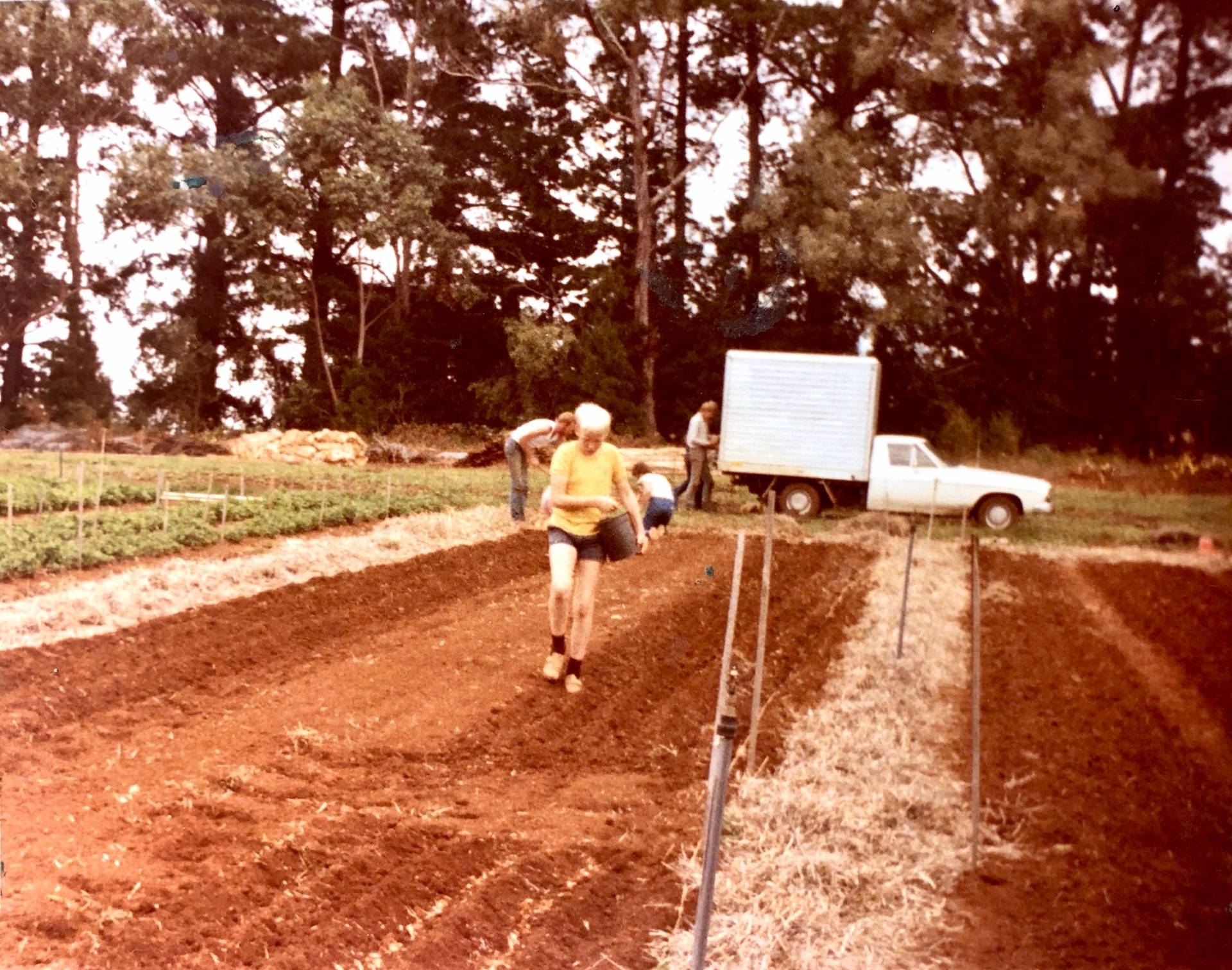
In Australia my family had to build a business, I loved that. My parents, together with my brothers, built a boiler room and a cold store for the flower bulbs. We used simple and inexpensive materials that we found along the way or that we got from neighbours or acquaintances. That's how I learned that if you need something, you can easily build it yourself. My brother Piet bought a welding machine and taught me how to weld, this is something I still do today and it’s where I first fell in love with steel.
If we needed a door, we'd make it out of whatever we had. Every time we left the greenhouse with arms full of flowers, we had to close the door. So, we made a bucket on a piece of string and put stones in it. That made the door close by itself, small and simple things, but I've always enjoyed that. I still make furniture from materials I find; I reuse just about everything that's available.
Holland
I grew my own flowers at age of 12 while I was still at primary school and made pocket money. I left Australia when I was 19 to go to Nepal to see their wild forests flowering in their spring and ended up in Holland in April spending the summer months there on my uncle and aunties farm. I learned a lot during this time. When I came back, I started to export flowers from family and other flower growers to the Philippines, New Caledonia and Hong Kong. During the crisis in Asia in 1997 everything collapsed and I went back to work for my brothers' company.
Floral artist
At that time, I started making flower arrangements in restaurants and shops. In 2000 I opened a flower shop in Melbourne. I made works of art out of garbage, which I combined with my floral arrangements. I built a name for myself; people liked the way I work.
Flemington Race Course - The Melbourne Cup
After a number of exhibitions, I started designing interiors for bars and restaurants. In 2006 I was asked to design a complete building for Macquarie Bank at the Flemington Race Course for The Melbourne Cup. That was exciting, the stands at The Melbourne Cup always receive a lot of attention. They are very luxurious, and that's where I came in with my upcycled garbage. I built a stand with recycled tires and fibers, organic fabrics and packaging crates. People talked about it and loved to juxtapose, I got a free hand the following year, it had to be bigger and more innovative. That's where Greenhouse started.
The first Greenhouse at Federation Square 2008
I designed my first Greenhouse for The Melbourne Cup, but this plan was rejected because it was a building instead of a marquee (tent). The city council had seen my plans and loved it. They asked if I would consider building it in Federation Square, the same place where we are now building the Greenhouse today. Our goal was to create a zero-waste building made from recyclable and natural materials without the use of chemicals. All the constituents had been recycled and reused. My sustainable hospitality system was considered to be totally innovative, but in reality, it's made up of systems from the past.
Greenhouse Sydney
After that we were asked to build a Greenhouse in Milan, London and other international cities. These didn’t eventuate but Perth and Sydney did. In Sydney we built next to The Rocks, with a view of the Opera House and Harbour Bridge, without doubt the most iconic site in Australia. It was very humbling. We had room for 70 people in the restaurant and another 100 on the roof. I continued to develop many sustainable systems, pouring all beverages, including wine and milk, out of barrels. In 2012 at the request of the Melbourne Food and Wine Festival we harvested urine for the first time, promoting and using it as a valuable and sustainable alternative to synthetic fertilizer. Among other things, I drew energy from the cooking oil we used and composted organic waste in vessels.
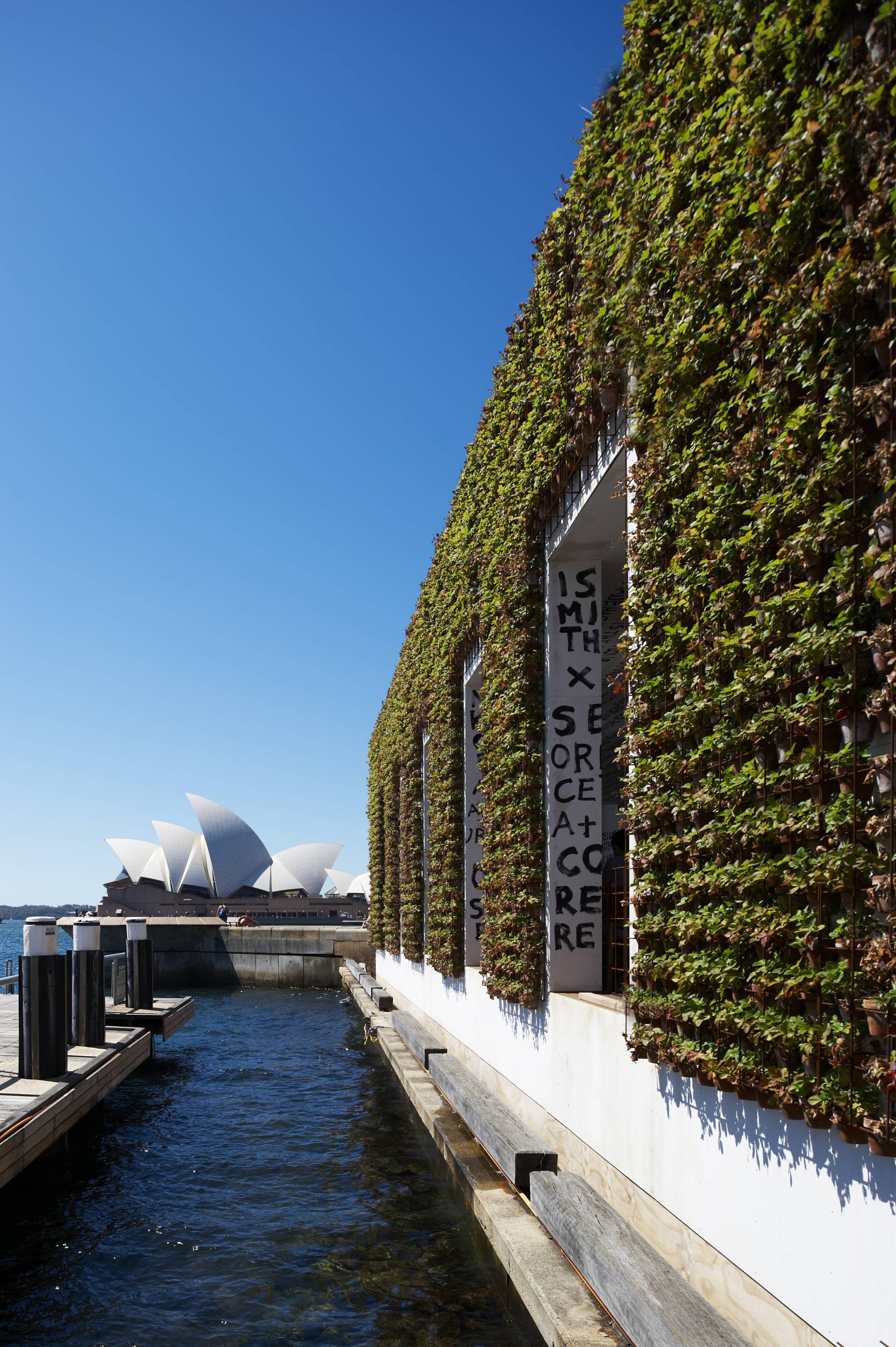
Silo
Silo opened in 2012, the first restaurant in the world to work without producing waste. This restaurant used all the systems from my Greenhouses. Silo London, which was started by Douglas McMaster, who worked with me in Melbourne, works in the same way. He just doesn't pour wine from barrels, which is more difficult in England. In 2014 I opened Brothl, where we made broth from the waste of high-end restaurants. Every week I collected about 100 kilos of bones, fish- and breadwaste and turned them into nutritious soups. I used the leftovers again as compost in my garden in Monbulk, where we grow trees for foliage and flowers.
Greenhouse Federation Square 2020
In this Greenhouse, all my knowledge comes together. All systems, recipes and research are visible to everyone. All I want is to show what is possible. To be an inspiration for others, to show how you can apply everything so this way of life can be spread all over the world. I want this project to be a catalyst for change. That's what it's all about.
Elon Musk
Through people like Elon Musk, things change. The largest shareholders of car companies are oil companies, so they keep each other going. You need visionaries to make changes happen. In June 2019 we exceeded using 100 million barrels of oil used each day, we never thought we would ever use that much oil worldwide. It's unnecessary and we all know what the consequences are if we continue to live like this. Is there someone you would really would like to meet?
Robert Kennedy Jnr, Greta Thunberg, Sir David Attenborough or even Barack Obama. 12 years ago, when he was elected president, I was already working on my projects. I've met so many interesting people in my life. When you do passion driven projects like this, they become magnets for people with the same interests. I’ve been truly blessed that I’ve met so many inspiring people over the years.
Ben Flanner
In 2018 I organized a Zero-Waste Dinner in New York with Douglas. Someone had made his restaurant available for a week and every night we cooked for our guests. The first day someone knocked on a door, I opened it and a man came in with a crate of carrots. Later it turned out that that door hadn't been used for 20 years. That man was Ben Flanner, the developer of the largest roof farm in the world, on the roof of a factory in New York. He said that we would be together on a panel that night.
He asked me to come by, but I couldn’t find the time. One of these days I found out that a good friend of mine had been murdered by a terrorist. I knew him so well and the news blew me away. Ben heard what had happened and said he would come and pick me up the next morning. He showed me his roof garden, we talked all day and he was there for me when I needed someone to talk to. I'll never forget that; those are special moments you’ll always remember.
We're all very lucky, you have to create happiness for yourself. My dad wanted to emigrate to Australia, so my parents made it happen. I love the Netherlands very much, but I am sure if I had grown up there, things would have been different. In the Netherlands, you wouldn’t probably have been allowed to build a barn yourself. This time had a huge influence on me, I learned a lot because we had to arrange it all by ourselves. My family showed me that you can make everything you need by yourself and that you can enjoy the process of making it.
Tonight, I picked mushrooms for dinner in a forest 500 meters from here. That's beautiful. My daughters ask in January if the wild mushrooms are there yet? Then I go with friends and family to pick mushrooms in the wild, we enjoy it enormously. It's the experience, taking care of your food together. Living among your food, finding it yourself or growing it. That's how it's supposed to be. Cooking together. Paying attention to our well-being and the future of our children.
Joost Bakker 14 augustus 2020
